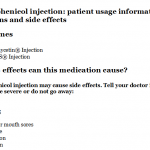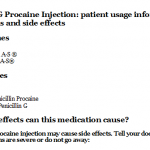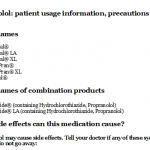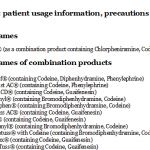
Infanrix: Diphtheria and Tetanus Toxoids and Acellular Pertussis Vaccine Adsorbed: patient information, prescribing information, ingredients, manufacturer, adverse reactions and side effects
Friday, April 07, 2017 by Gregory Van Dyke
http://www.naturalnewsreference.com/2017-04-07-infanrix-diphtheria-and-tetanus-toxoids-and-acellular-pertussis-vaccine-adsorbed-patient-information-prescribing-information-ingredients-manufacturer-adverse-reactions-and-side-effects.html
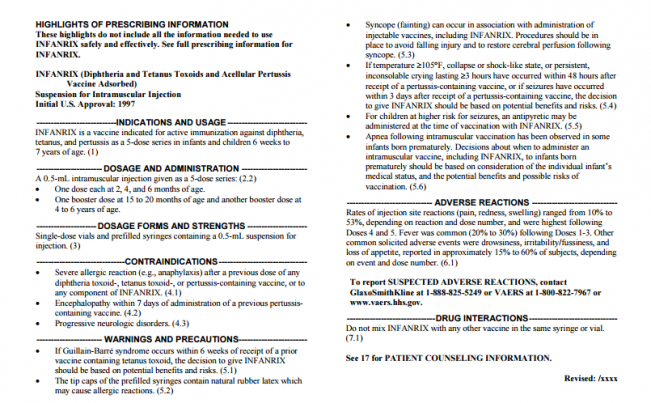
HIGHLIGHTS OF PRESCRIBING INFORMATION
These highlights do not include all the information needed to use INFANRIX safely and effectively. See full prescribing information for INFANRIX.
See full insert sheet at this link at the Natural News Reference website.
INFANRIX (Diphtheria and Tetanus Toxoids and Acellular Pertussis Vaccine Adsorbed)
Suspension for Intramuscular Injection
Initial U.S. Approval: 1997
INGREDIENTS AND EXCIPIENTS
INFANRIX (Diphtheria and Tetanus Toxoids and Acellular Pertussis Vaccine Adsorbed) is a noninfectious, sterile vaccine for intramuscular administration. Each 0.5-mL dose is formulated to contain 25 Lf of diphtheria toxoid, 10 Lf of tetanus toxoid, 25 mcg of inactivated pertussis toxin (PT), 25 mcg of filamentous hemagglutinin (FHA), and 8 mcg of pertactin (69 kiloDalton outer membrane protein).
The diphtheria toxin is produced by growing Corynebacterium diphtheriae in Fenton medium containing a bovine extract. Tetanus toxin is produced by growing Clostridium tetani in a modified Latham medium derived from bovine casein. The bovine materials used in these extracts are sourced from countries which the United States Department of Agriculture (USDA) has determined neither have nor present an undue risk for bovine spongiform encephalopathy (BSE). Both toxins are detoxified with formaldehyde, concentrated by ultrafiltration, and purified by precipitation, dialysis, and sterile filtration.
The acellular pertussis antigens (PT, FHA, and pertactin) are isolated from Bordetella pertussis 287 culture grown in modified Stainer-Scholte liquid medium. PT and FHA are isolated from the 288 fermentation broth; pertactin is extracted from the cells by heat treatment and flocculation. The 289 antigens are purified in successive chromatographic and precipitation steps. PT is detoxified 290 using glutaraldehyde and formaldehyde. FHA and pertactin are treated with formaldehyde.
Diphtheria and tetanus toxoids and pertussis antigens (PT, FHA, and pertactin) are individually adsorbed onto aluminum hydroxide.
Diphtheria and tetanus toxoid potency is determined by measuring the amount of neutralizing 294 antitoxin in previously immunized guinea pigs. The potency of the acellular pertussis 295 components (PT, FHA, and pertactin) is determined by enzyme-linked immunosorbent assay 296 (ELISA) on sera from previously immunized mice.
Each 0.5-mL dose contains aluminum hydroxide as adjuvant (not more than 0.625 mg aluminum by assay) and 4.5 mg of sodium chloride. Each dose also contains ≤100 mcg of residual formaldehyde and ≤100 mcg of polysorbate 80 (Tween 80).
INFANRIX is available in vials and prefilled syringes. The tip caps of the prefilled syringes contain natural rubber latex; the plungers are not made with natural rubber latex. The vial stoppers are not made with natural rubber latex.
INFANRIX is formulated without preservatives.
INDICATIONS AND USAGE
INFANRIX is a vaccine indicated for active immunization against diphtheria, tetanus, and pertussis as a 5-dose series in infants and children 6 weeks to 7 years of age. (1)
DOSAGE AND ADMINISTRATION
A 0.5-mL intramuscular injection given as a 5-dose series: (2.2)
– One dose each at 2, 4, and 6 months of age
– One booster dose at 15 to 20 months of age and another booster dose at 4 to 6 years of age.
DOSAGE FORMS AND STRENGTHS
Single-dose vials and prefilled syringes containing a 0.5-mL suspension for injection. (3)
CONTRAINDICATIONS
– Severe allergic reaction (e.g., anaphylaxis) after a previous dose of any diphtheria toxoid-, tetanus toxoid-, or pertussis-containing vaccine, or to any component of INFANRIX. (4.1)
– Encephalopathy within 7 days of administration of a previous pertussiscontaining vaccine. (4.2)
– Progressive neurologic disorders. (4.3)
WARNINGS AND PRECAUTIONS
– If Guillain-Barré syndrome occurs within 6 weeks of receipt of a prior vaccine containing tetanus toxoid, the decision to give INFANRIX should be based on potential benefits and risks. (5.1)
– The tip caps of the prefilled syringes contain natural rubber latex which may cause allergic reactions. (5.2)
– Syncope (fainting) can occur in association with administration of injectable vaccines, including INFANRIX. Procedures should be in place to avoid falling injury and to restore cerebral perfusion following syncope. (5.3)
– If temperature ≥105°F, collapse or shock-like state, or persistent, inconsolable crying lasting ≥3 hours have occurred within 48 hours after receipt of a pertussis-containing vaccine, or if seizures have occurred within 3 days after receipt of a pertussis-containing vaccine, the decision to give INFANRIX should be based on potential benefits and risks. (5.4)
– For children at higher risk for seizures, an antipyretic may be administered at the time of vaccination with INFANRIX. (5.5)
– Apnea following intramuscular vaccination has been observed in some infants born prematurely. Decisions about when to administer an intramuscular vaccine, including INFANRIX, to infants born prematurely should be based on consideration of the individual infant’s medical status, and the potential benefits and possible risks of vaccination. (5.6)
ADVERSE REACTIONS
Rates of injection site reactions (pain, redness, swelling) ranged from 10% to 53%, depending on reaction and dose number, and were highest following Doses 4 and 5. Fever was common (20% to 30%) following Doses 1-3. Other common solicited adverse events were drowsiness, irritability/fussiness, and loss of appetite, reported in approximately 15% to 60% of subjects, depending on event and dose number. (6.1)
To report SUSPECTED ADVERSE REACTIONS, contact GlaxoSmithKline at 1-888-825-5249 or VAERS at 1-800-822-7967 or www.vaers.hhs.gov.
DRUG INTERACTIONS
Do not mix INFANRIX with any other vaccine in the same syringe or vial. (7.1)
USE IN SPECIFIC POPULATIONS
Pregnancy
Pregnancy Category C: Animal reproduction studies have not been conducted with INFANRIX. It is also not known 267 whether INFANRIX can cause fetal harm when administered to a pregnant woman or can affect 268 reproduction capacity.
Pediatric Use
Safety and effectiveness of INFANRIX in infants younger than 6 weeks of age and children 7 to 271 16 years of age have not been established. INFANRIX is not approved for use in these age 272 groups.
Revised: /xxxx
https://www.fda.gov/downloads/BiologicsBloodVaccines/Vaccines/ApprovedProducts/UCM124514.pdf
Tagged Under: Tags: dosage, infanrix, ingredients, insert sheet, side effects, usage, warnings

